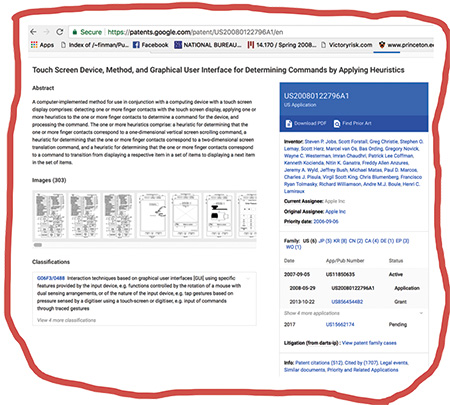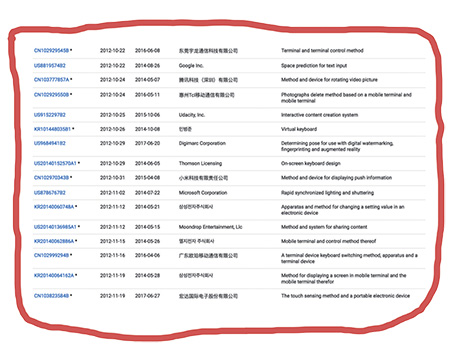Dr Stephen Sun, Assistant Professor in the Department of
Accountancy, shows how technology links among firms can help
investors predict stock returns. This article is based on "Technological
links and predictable returns," by Charles Lee, Stephen Sun, Rongfei
Wang, Ran Zhang published in the Journal of Financial Economics,
June 2019.
In today's knowledge-based
economy, technological prowess is
becoming an increasingly important
determinant of firms' short-term
profitability as well as long-term
survival. Many of the largest firms
in the world such as Amazon,
Google, Intel, and Samsung, may
have minimal overlap in product
space, yet are closely-aligned in
terms of technological expertise.
These technological affinities
transcend traditional industry
boundaries and are typically not
readily discernible from firms'
financial reports. Nevertheless, they
can be key drivers of the economic
fortune of today's businesses.
Our paper entitled "Technological
Links and Predictable Returns"
exploits this special type of inter-firm
linkage and applies this insight
to predict stock returns in the US
equity market.
The "Steve Jobs' patent"
The inter-linkage of firms'
technologies has been around for
some time. Let's consider the so-called
"Steve Jobs' patent." This
patent basically opened the door
for the creative production of
smartphones as we know them
today. It is entitled "Touch Screen
Device, Method and Graphical
User Interface for Determining Commands by Applying Heuristics."
We can see a screenshot of the
patent information from the Google
Patents website above. It is indeed
the core patent of Apple's multi-touch
technology and has been
cited and used in countless devices
that have a multi-touch screen. This
patent is nicknamed "The Steve
Jobs' patent" as he is listed as the
first co-inventor on the patent filing
form and has been cited over 1000
times since its approval in 2009.
The patent is so valuable that it has
even received litigation to contest
and invalidate it. It was initially
invalidated in December 2012 and
finally revalidated in October 2013.
Patent citations reveal
knowledge flows among firms
We can see a screenshot of follow-on
patents by other companies
that cited this patent on the next page. Patent citation can give us
a concrete way to see knowledge
flows or technology linkages
among firms. We observe a broad
range of companies around the
globe citing this patent, from well-known
companies such as Google,
Microsoft and Tencent, as well as
companies in related electronics
sectors in China, South Korea and
the US. All these companies can be
regarded as technologically linked
to Apple in this respect.
The value of investigating
firms' technology linkages
There are two major reasons why
firms' technology linkages can
actually be useful in transmitting
values and helpful in predicting
stock returns. First, firms working
on areas of innovation that
substantially overlap with each
other could be subject to similar input or output linkages, which
become important transmission
channels for common price shocks.
For example, breakthroughs in
production technology have led
to dramatic cost reductions in
silicon chips, which in turn greatly
impacted on the vitality of the
electronics industry relying on these
chips as a raw material. Similarly,
technological progress in touch
screen technology today bodes well
for the firms making products that
use these touch-screens.
The second reason is that, firms
with similar technologies can also
benefit from the spillover effect
of each other's innovation activity
along technological lines. More
specifically, firms working on similar
technologies may use similar inputs
of production, with inputs being
broadly understood as anything
required in the production process,
for example human resources,
key raw materials, production equipment, information and
communication technology, or
intangible knowledge.
Scientific critique of new
technology can directly impact
share price
Here is a concrete real-world
example to illustrate the point.
CRISPR is a new bio-technology
that can enable scientists to edit
genes and has wide applicability. It
is believed by some to be the most
important biological breakthrough
in the past decade. However, the
technology itself is still in an early
stage and rapidly developing. A
letter in the renowned journal
Nature Methods on 30 May, 2017
pointing out potentially dangerous
flaws in the CRISPR-Cas9 gene
editing system, gave biotech
investors a sinking feeling that
day and stocks in genome-editing
companies using that technology
had the same experience. By the
close of trading Editas Medicine had fallen nearly 12 percent, Crispr
Therapeutics was down just over 5
percent, and Intellia Therapeutics
had plunged just over 14 percent.
All these bio companies relied
upon technology very similar to the
CRSPR technology.
A similar event happened again
on 8 January 2018. The world
of science awoke to news that
suddenly cast uncomfortable
doubt on many of the past five
years' major breakthroughs: A new
paper had identified a possible
barrier to using the revolutionary
gene-editing tool CRISPR-Cas9
in humans. The news incited a
temporary hysteria that sent the
stocks of all three major CRISPR
biotech firms tumbling in premarket
trading, declining by as much as
11.9 percent.
How to exploit inter-firm
technological linkages to make
profits
In our paper, we find that
investors can exploit the inter-firm
technological linkages to make
profits in the equity market. The
idea is very simple. For each firm,
we can identify a set of companies
to which it is technologically
related in terms of their patenting
similarities. We call such closely
related companies "technology
peers." We then calculate the
average stock return in the past
month of these technology peers.
We then sort firms at the beginning
of each month according to the
average stock return of their
tech peers. We will buy those
firms above 90% most profitable average tech peer returns and
short sell those firms below 10%
most profitable average tech peer
returns, in equal weighting. This
turns out to be a very profitable
investment strategy, generating a
mean annual return over 14% and
is quite robust, with T-statistics over
5. We also explore the underlying
mechanisms for this strong asset
pricing anomaly result. We find
the results are driven by investors'
limited attention bias, consistent
with a growing behavioral finance
literature that documents similar
patterns. That is, investors do not
seem to pay enough attention to
the timely change in technologically
related firms' stock price changes.
As the technologically related firms
convey value-relevant information
to the focal firm, ultimately the
focal firm's stock price will move in
similar directions to their technology
peers.
Greater attention to
technology-linkages leads to
better investment decisions
Our study matters as it points
to researchers needing to better
understand the mechanism through
which such technological attributes
impact information processing
costs, and thus market prices. In
our own words: "It is difficult to
argue that this publicly available
mapping should not be taken into
account when forming expectations
about technology-intensive firms'
future cash flows. Certainly, from
an investor's perspective, greater
attention to technology-linkages
could lead to better investment
decisions. From a firm's perspective,
educating investors on its
technological capabilities, perhaps
through greater media coverage,
may likewise yield improvements in
pricing efficiency."
A note from the author
The paper, "Technological Links
and Predictable Returns" was
coauthored with my former
colleague Professor Rania Zhang
and PhD student Rongfei Wang
at Peking University, Guanghua
School of Management, as well as
Professor Charles Lee at Stanford
University, where I obtained
my PhD in economics in 2015.
The paper was published in the
2019 June issue of the Journal of
Financial Economics and has won
the 2018 Roger F. Murray Prize
by The Institute for Quantitative
Research in Finance, also known
as the Q-group. The work is not
only published in a world-class
academic journal, but has also been
well received in the investment
community. While our study only
uses data from the US stock market,
some Chinese hedge funds have
replicated our results and applied it
in the China equity market.
Dr Stephen Sun
Assistant Professor
Department of Accountancy



